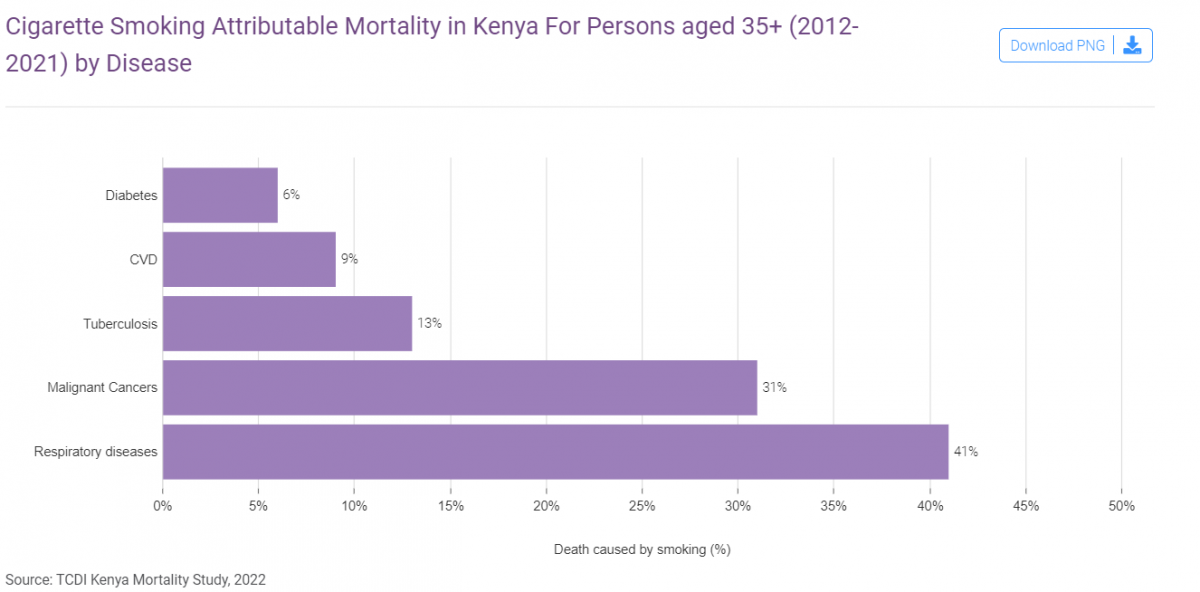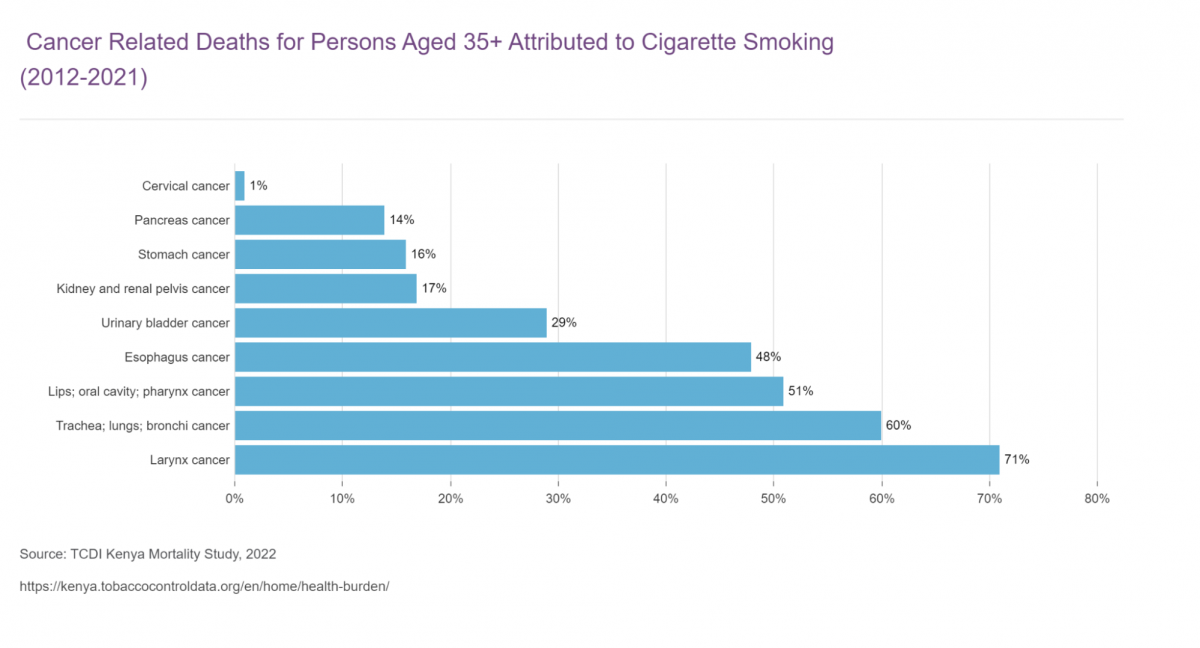
New Research Manuscript on Mortality from Tobacco Use in Kenya
Development Gateway: An IREX Venture (DG) is pleased to announce the publication of a research manuscript on Mortality from Tobacco Use in Kenya. This research was carried out as part of the Tobacco Control Data Initiative (TCDI) activities in Kenya and is part of a broader report on Morbidity and Mortality from Tobacco Use in Kenya and the Economic Costs. Data from this research is available on the TCDI Kenya dashboard, which aims to supply decision-makers in government, members of civil society, and academia with improved access to country-specific data to better inform tobacco control policy.
This is the second of three manuscripts which seek to break down the research report’s findings. The first, published in November 2023, explored the prevalence, patterns, and factors associated with tobacco use among patients with tobacco-related illnesses such as cancers, cardiovascular disease, chronic respiratory disease and diabetes.
This blog highlights some key findings in the manuscript from the research carried out in Kenya in 2021 on morbidity and mortality from tobacco use in Kenya and the economic costs thereof.
Why research on Mortality from Tobacco Use in Kenya?
In Kenya, about 12,000 individuals die from tobacco smoking each year. Tobacco smoking is a risk factor for numerous diseases, including chronic respiratory diseases, cardiovascular diseases, various cancers, and diabetes. Tobacco use results in disability and death and imposes significant economic costs on Kenya’s health system and economy. In 2020, Kenyan tobacco control stakeholders requested domestically collected and analyzed data on mortality arising from tobacco use in Kenya to assist decision-makers make and implement tobacco control policies.
Key findings from the research
All-cause mortality data of deaths that occurred in Kenyan health facilities at sub-county, county and national levels between 2012 and 2021 was systematically reviewed from hospital medical records. Deaths arising among persons 35 years and older from five types of tobacco-related illnesses (respiratory diseases, diabetes mellitus, malignant cancers, tuberculosis, and cardiovascular diseases) were identified, and the fraction of deaths attributable to tobacco smoking was calculated.
Between 2012 and 2021, Kenya experienced 60,228 deaths attributed to tobacco-related diseases (respiratory diseases, diabetes mellitus, malignant cancers, tuberculosis, and cardiovascular diseases) among adults aged 35 years and older. The age of 35 years is significant as these are classified as premature deaths that occur when people are still economically productive.
Out of the 60,228 observed deaths, 9,943 (16.5%) were attributed to tobacco smoking.

Out of the 9,943 deaths attributable to tobacco smoking, 8.7% were women, and 91.3% were men, primarily because men smoke more than women. The major contributors to mortality included respiratory diseases (41%), malignant cancers (31%), tuberculosis (13%), cardiovascular diseases (9%) and diabetes mellitus (6%).
Among respiratory infections, pneumonia and influenza (86%) predominated, surpassing COPD (13%) and bronchitis/emphysema (1%). The year 2020 witnessed a significant twofold increase in pneumonia and influenza deaths, attributed to COVID-19.
Noteworthy cancers with the highest deaths included larynx cancer (71%), lung cancer (60 and oropharyngeal cancer (51%). Cerebrovascular diseases (87%) emerged as the primary cardiovascular cause of death, followed by ischemic heart diseases (10%) and other arterial diseases (3%).

To address the significant impact of tobacco-related diseases on mortality in Kenya, a multifaceted approach to intervention is needed, including:
- Progressively and regularly increasing tobacco taxes and enforcing smoke-free policies in public spaces to reduce tobacco consumption and exposure to secondhand tobacco smoke.
- Comprehensive public awareness campaigns, utilizing various media channels to emphasize the association between tobacco use and diseases highlighted in the study findings.
- School-based programs to educate the younger population about the dangers of tobacco, aiming to deter initiation.
- Training of healthcare providers to offer effective smoking cessation counseling during routine visits, and access to cessation resources should be improved.
The final manuscript from the research report will focus on the economic burden of treating tobacco-related illnesses, to be published in the coming months. If you would like to learn more about TCDI and explore country-specific data, kindly visit www.tobaccocontroldata.org.